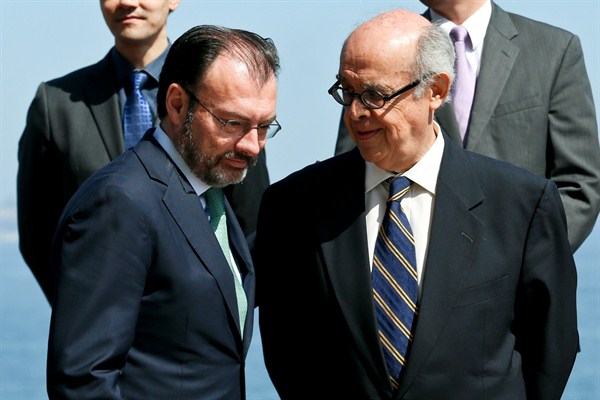Earlier this month, the United States, Canada and Mexico concluded the seventh round of talks to amend the North American Free Trade Agreement, once again failing to agree on terms to update the 24-year-old pact that U.S. President Donald Trump promised to renegotiate. Trump’s threats to pull the U.S. out of NAFTA if he doesn’t get what he wants, on top of his other protectionist trade policies, have pushed Mexico to diversify its trade relationships, including with its neighbors in Latin America. In an email interview, Duncan Wood, the director of the Mexico Institute at the Wilson Center in Washington, discusses the costs of Mexico moving away from the U.S. economically and what this shift could mean for Mexico and the region.
WPR: How are trade relations between Mexico and Latin America changing as a result of Trump’s economic policies, especially in light of the threat to the future of NAFTA?
Duncan Wood: It is not unusual for Mexican presidents and their governments to make bold statements about the need to diversify trade and diplomatic relations away from the United States and toward their own cultural neighborhood of Latin America. Some presidents, such as Vicente Fox and Felipe Calderon, have even taken steps toward deepening those ties, but the overwhelming historical evidence suggests that the massive economic gravitational force exerted by the U.S. on Mexico is inescapable. Often, Mexican presidents have adopted a rhetoric of diversification while in fact pursuing deeper integration with their northern neighbor.

